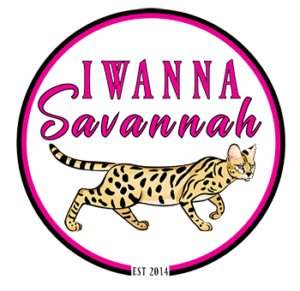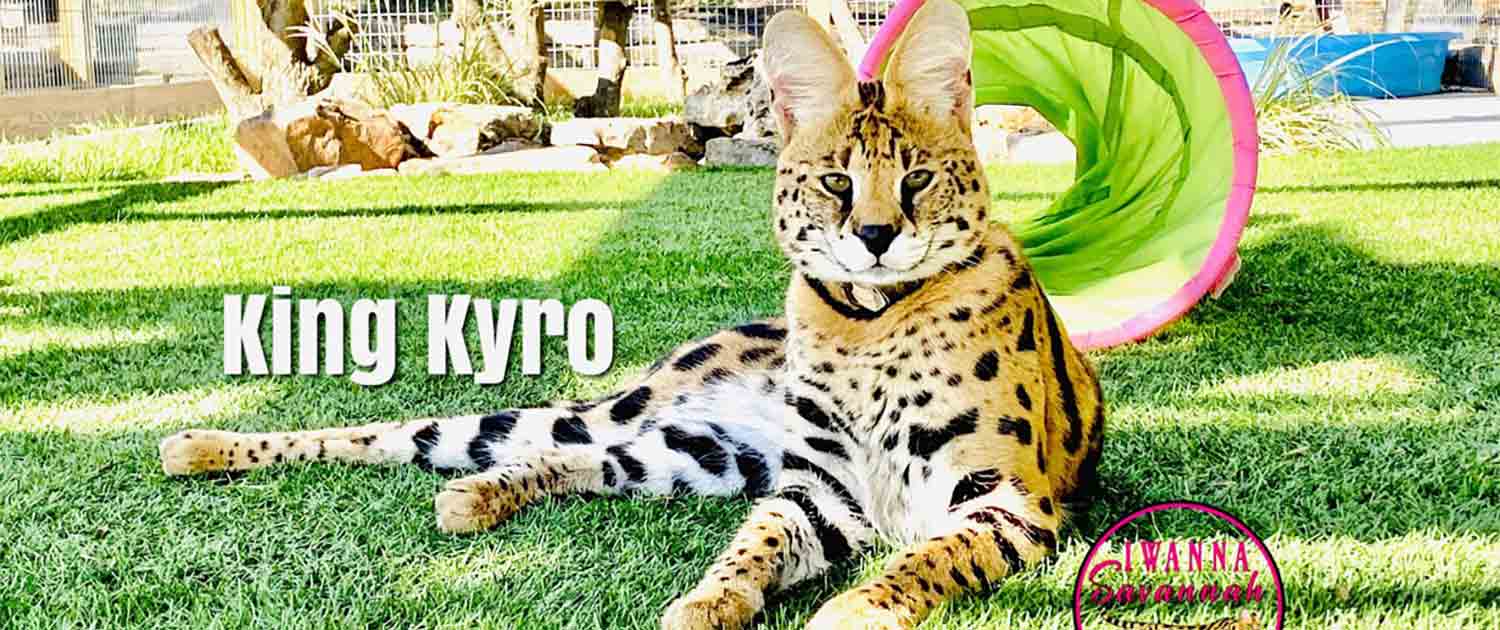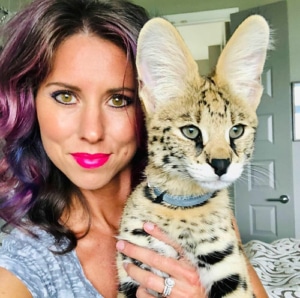What do the Different Generations of “F” mean?
The Savannah is referred to by its ‘F’ generation. The ‘F’ stands for ‘filial’ and refers to how many generations removed it is from the wild, the Serval. So an F1 is one generation removed from the wild , the Serval (has a Serval parent), an F2 is two generations removed from the wild, so has a Serval grandparent, and so on.
The larger the number F, the smaller the cat.
- F1 (~50-85% Serval)
- F2 (~25-35% Serval)
- F3 (~20-27% Serval)
- F4 (~15-22% Serval)
- F5 (~10~15% Serval)
- F6 (~8-12% Serval)
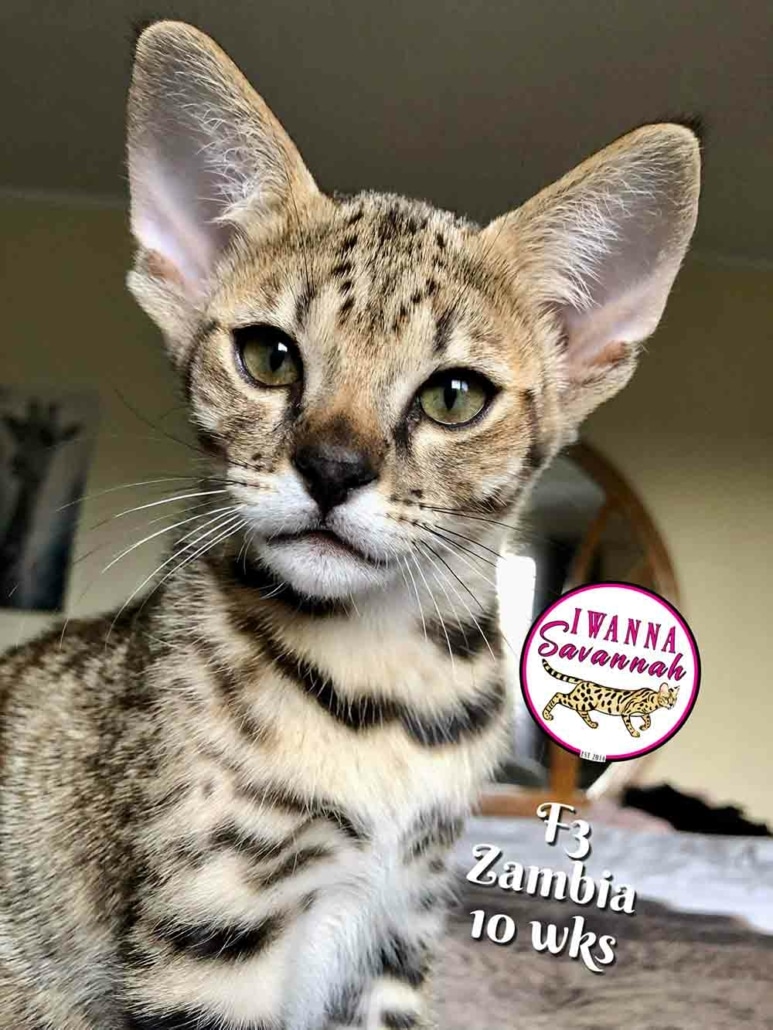
Savannah Kittens Come With
-
TICA registered
-
Vaccinated
-
Dewormed
-
Vet Checked
-
Blanket
-
Toy
-
Food
-
Fiv/Felv tested Negative
-
Litter box trained
-
2 year Health Guarantee
-
16 page Kitten Care Guide
-
Parents genetic tested: PRA & PKDEF results are NN
-
Most important, raised with love by our whole family (4 young kids) so they are super sweet and socialized.
-
Life Time of advice & guidance
-
F1, F2, F3 harness train & come with harness.
-
F1, F2, F3 Microchipped
Savannah kitten for sale
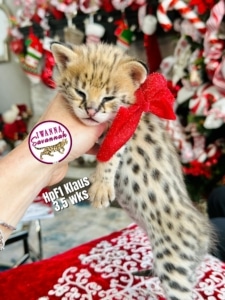
Why choose a Savannah kitten for sale? Whether you are looking for the most exotic looking feline friend, or just a more exotic and less expensive version, you have found the right Savannah cat breeder. F1 Savannah cat for sale are going to be the most exotic as well as the most expensive. After all, choosing an F1 Savannah kitten for sale is going to look closest to the African Serval. If exotic is what you’re after in your new Savannah kitten for sale, think F1.
What is a Savannah Cat?
The Savannah cat is one of world’s rarest hybrid cat. Its a cross between an African Serval and a domesticated house cat. Savannahs are recognized for their tall legs, long slender bodies, large ears, long necks, short tails and of course their exotic spots.
The first Savannah produced was by a Bengal breeder, Judee Frank. She crossbred a male serval, belonging to Suzi Woods, with a Siamese (domestic cat) to produce the first Savannah cat (named Savannah) on April 7, 1986. In 1996, Patrick Kelley and Joyce Sroufe wrote the original version of the Savannah breed standard and presented it to the board of The International Cat Association. In 2001, the board accepted the breed for registration.
Today many own Savannahs and they come in all different sizes and colors. Ranging from 10lbs-30lbs. The coat colors vary as well. The traditional BST (brown spotted tabby)comes in two shades warm golden and cool toned with black spots. There are silvers SST (silver spotted tabby) which are almost white/light grey with black spots. There is the melanistic (Black with black spots) they look like a panther. Then there is the classic (marble) they are ones with swirl pattern. I usually only produce the BST but on occasion will have some melanistic show up. I have one Silver queen so on occasion get silvers.
